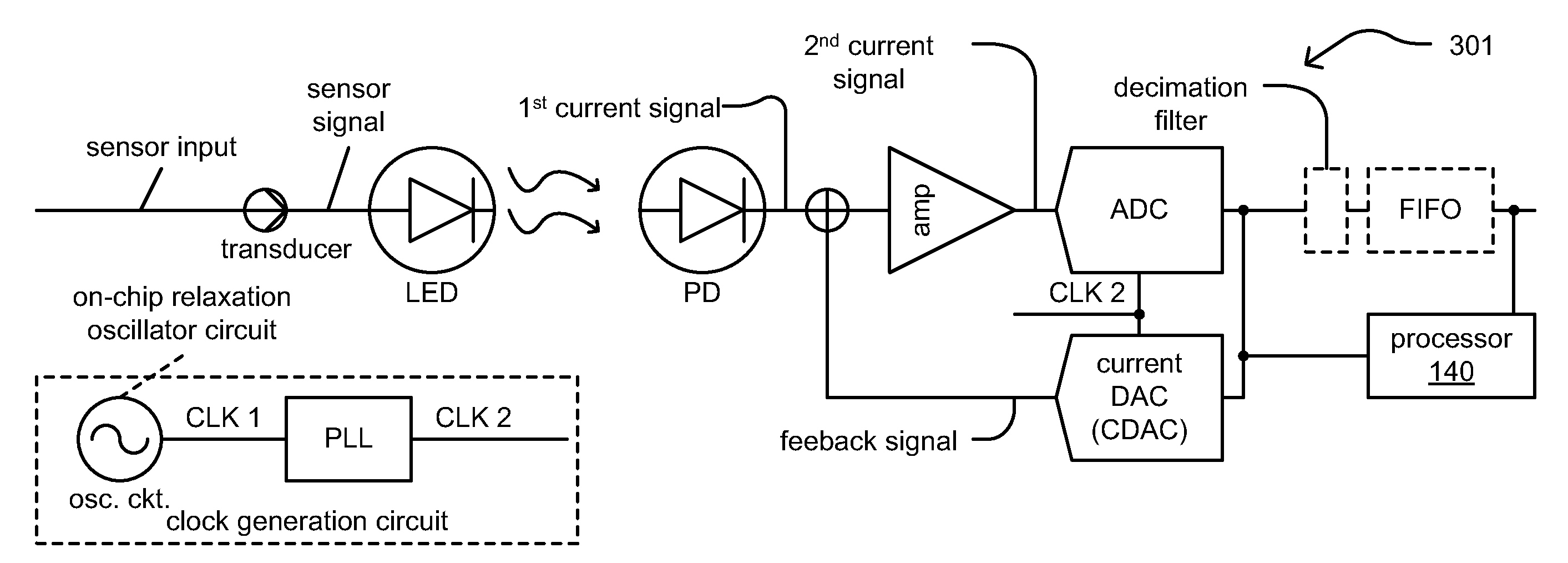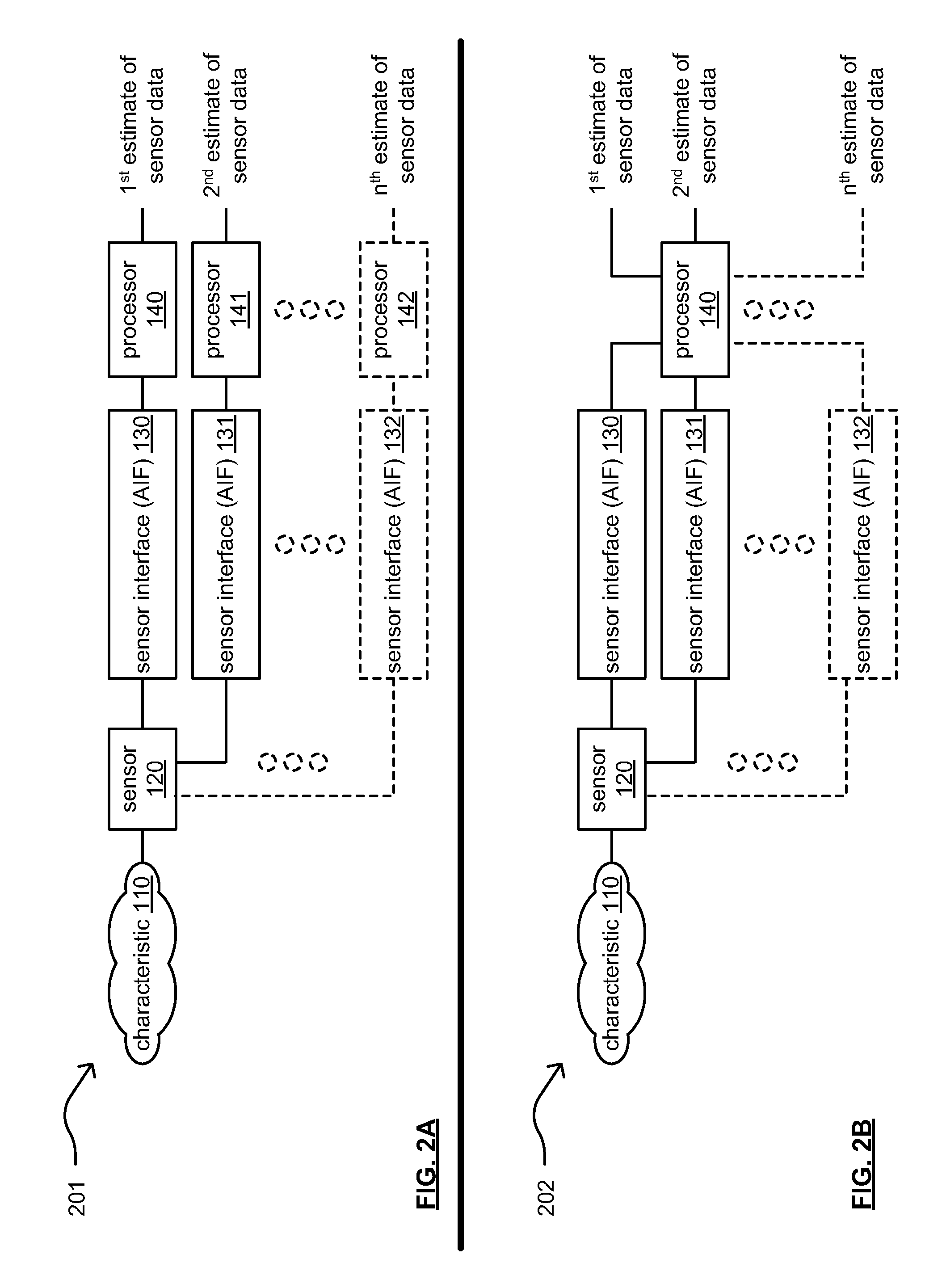Low-power data acquisition system and sensor interface
a data acquisition system and low-power technology, applied in the field of low-power data acquisition systems and sensor interfaces, can solve the problems of insufficient solution for applications, device access to relatively high power or voltage levels, and insufficient solution for prior art devices
- Summary
- Abstract
- Description
- Claims
- Application Information
AI Technical Summary
Benefits of technology
Problems solved by technology
Method used
Image
Examples
embodiment 101
[0021]FIG. 1A is a diagram illustrating an embodiment 101 of one or more communication systems that includes a sensor interface. This disclosure presents various novel solutions for sensor interfaces and other components within sensor-based systems. The various embodiments and examples presented herein may be implemented within a wide variety of applications including those implemented in a general sensing environment. There are many examples of sensing environments and sensor-based systems. Some examples include those sensor-based systems directed towards applications within any one of biomedical, environmental, security, processing, manufacturing, operational, etc. applications. Generally speaking, the various architectures and designs presented in this disclosure may be adapted and applied to any desired sensor-based system. Some examples of environmental characteristics include temperature, humidity, barometric pressure, etc. Some examples of biomedical characteristics include b...
embodiment 102
[0026]FIG. 1B is a diagram illustrating another embodiment 102 of one or more communication systems that includes a sensor interface. In this diagram, a number of characteristics 110, 111, through 112 are monitored or detected by respective sensors 120, 121, through 122. Each respective sensor provides a sensor signal to a corresponding sensor interface. For example, sensor 120 provides a first sensor signal to sensor interface 130, sensor 121 provides a second sensor signal to sensor interface 131, and so on. Each respective sensor interface provides a digital signal to a respective processor. Sensor interface 130 provides a first digital signal to processor 140 that generates an estimate of first sensor data associated with characteristic 110. Sensor interface 131 provides a second digital signal to processor 141 that generates an estimate of second sensor data associated with characteristic 111. Generally speaking any number of characteristics up to characteristic 112, any number...
embodiment 202
[0029]FIG. 2B is a diagram illustrating another embodiment 202 of one or more communication systems that includes a sensor interface. The embodiment 202 of this diagram is similar to the embodiment 201 of the previous diagram with the exception that a single processor 140 receives the digital signals provided from the sensor interfaces 130-132. In this diagram, a single processor 140 may then differentiate characteristics between the different digital signals provided via different sensor interfaces based on knowledge of the particular architecture and design of the different sensors. If desired, the processor 140 may select among and use different digital signals provided from the different sensor interfaces 130-132 based on any consideration. For example, in certain instances, a digital signal provided by one of the sensor interfaces 130-132 may be preferable over another digital signal provided by another one of the sensor interfaces 130-132. There may be instances in which diffe...
PUM
 Login to View More
Login to View More Abstract
Description
Claims
Application Information
 Login to View More
Login to View More - R&D
- Intellectual Property
- Life Sciences
- Materials
- Tech Scout
- Unparalleled Data Quality
- Higher Quality Content
- 60% Fewer Hallucinations
Browse by: Latest US Patents, China's latest patents, Technical Efficacy Thesaurus, Application Domain, Technology Topic, Popular Technical Reports.
© 2025 PatSnap. All rights reserved.Legal|Privacy policy|Modern Slavery Act Transparency Statement|Sitemap|About US| Contact US: help@patsnap.com



